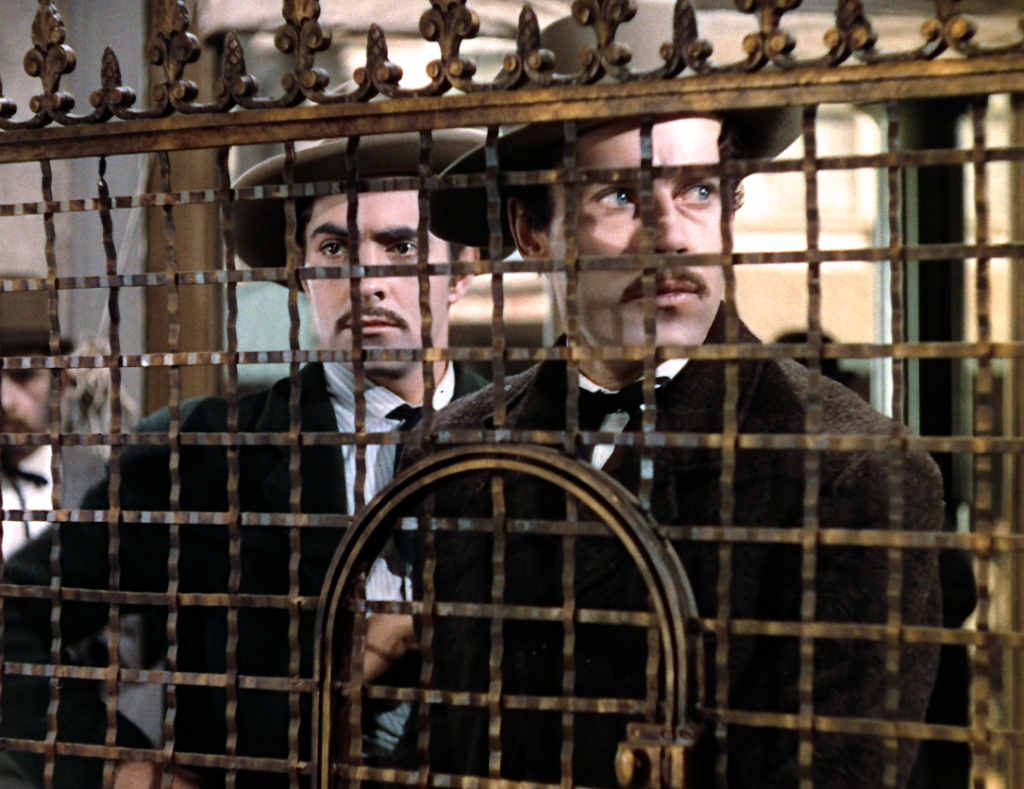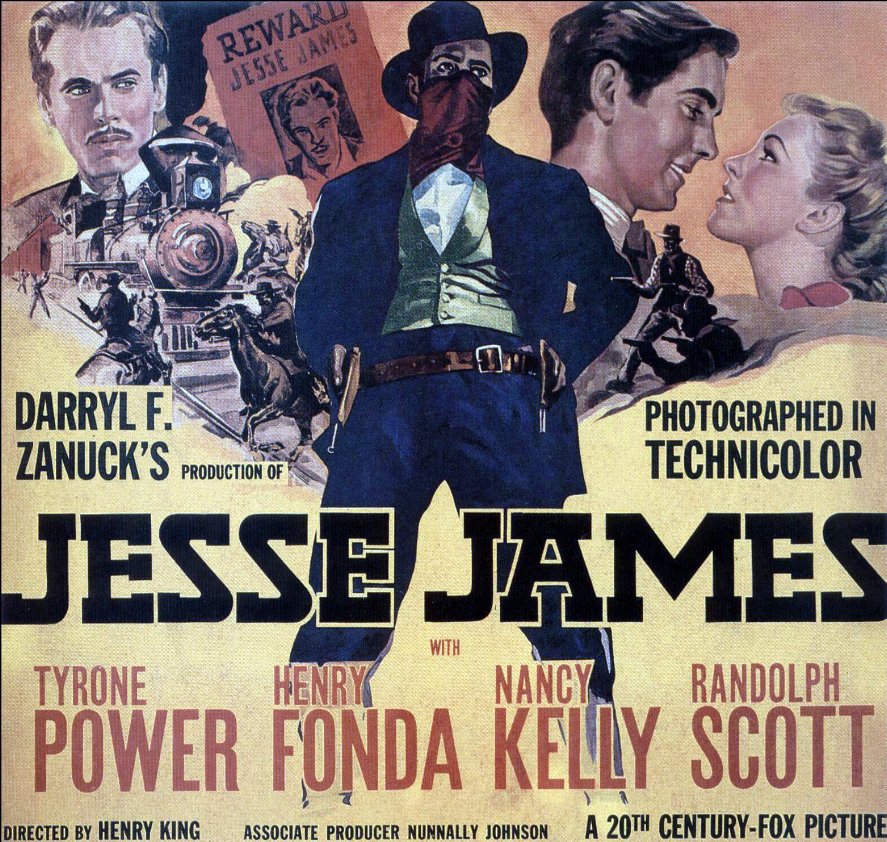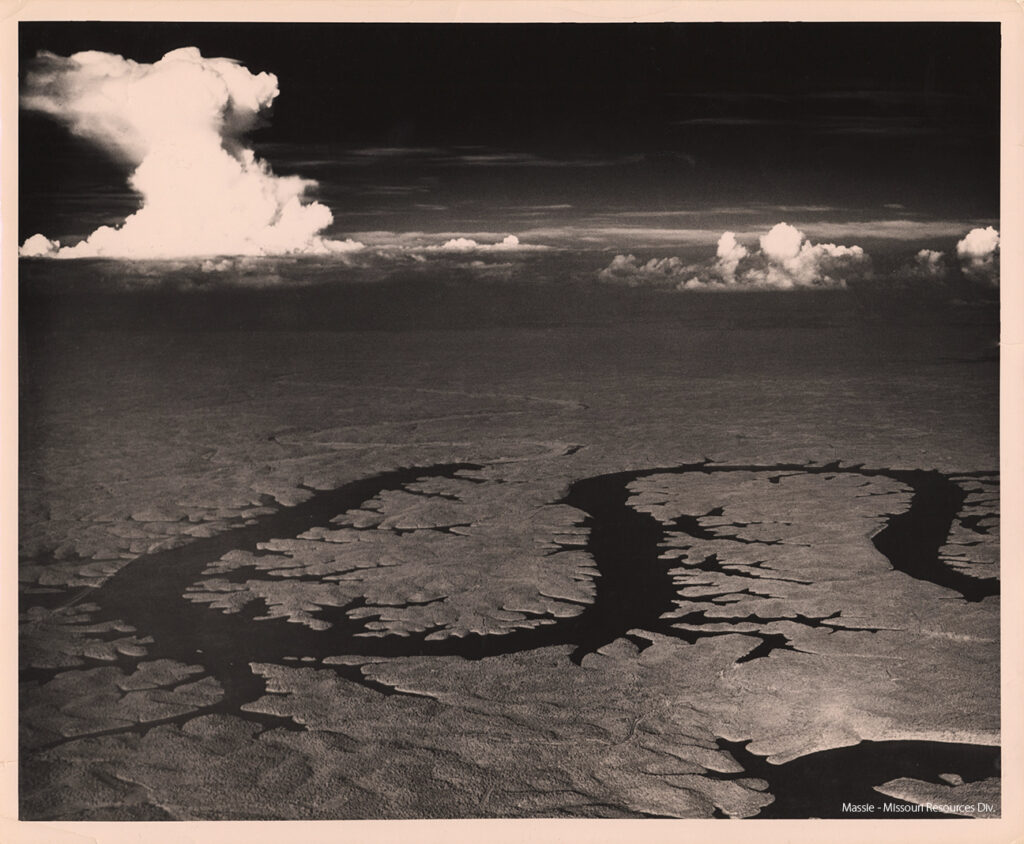
Scene from the movie Jesse James
by Michael Gillespie (posthumous) with additional information by Shore
While Netflix could be credited with thrusting Lake of the Ozarks onto the global stage, Hollywood actually discovered the Lake in 1938.
A movie production company used the still-new body of water and its undeveloped green shoreline as a backdrop for a scene in the motion picture Jesse James, starring Tyrone Power and Henry Fonda. It was only a second-unit scene — none of the big stars were present for the shooting. But an incident that took place during the shoot would have an effect on the motion picture industry that has lasted to this very day.
The motion picture, released in January 1939, was shot on location around Pineville, Missouri, in the extreme southwestern corner of the state. The Elk River provided a convenient Ozark stream for background visual effect, especially during chase scenes, when the drama was intensified by the splashing hoofs of galloping horses.
From a purely historical perspective, the movie was terrible. Almost nothing in it matched the known facts of Frank and Jesse James’ lives. It was simply a western, with lots of shoot-em-up and high melodrama. But its Ozark film location, as well as the fact that it was produced in color, greatly enhanced the overall visual impact of the movie.

Movie flyer for ‘Jesse James’
The picture, however, is probably better known for another reason. In one of the outdoor scenes, Frank and Jesse are riding hard to avoid capture after attempting to rob the bank in Northfield, Minnesota. They suddenly come to the edge of a high precipice overlooking a mountain stream. (Never mind that they are fleeing from Minnesota towards Missouri—not too many high bluffs and mountain streams along that route, but who would know?) Anyway, poor harried Frank and Jesse have no alternative. They must jump off the cliff with their horses, into the water below. And they do. And back in 1938, when the movie was made, jumping over a cliff meant jumping over a real cliff with a real horse and rider. That’s where Lake of the Ozarks came in.
Jumping into the Elk River was out of the question. It was simply too shallow. The same held true for every other Ozark cliff and river. Except at Lake of the Ozarks. In 1938 it was the only deep-water lake in the region. And it had plenty of cliffs along its shoreline. So the second-unit camera crew moved up here for the shoot.
They settled on a 70-foot high cliff between mile markers 21 and 22. The cameras would be angled to show the cliff and some of the Lake, but the broader expanse of water would be off-camera so as to give the impression that our heroes were jumping into a small river. And since there was an element of danger here, only one stuntman on one horse would actually go over the edge. The spliced footage from two cameras would give the impression that two riders made the jump.

1940s Aerial from Lake of the Ozarks
No horse could be trained to make that jump, so the chosen steed was placed on a slippery platform known as a tilt chute. With stuntman Cliff Lyons in the saddle, one end of the chute was lifted, and horse and rider fell forward.
In the first moment of the scene, the horse rolled onto its back—hind quarters first—and slid over the stone precipice. Once in the air, the animal managed to right itself and hit the water belly first. Lyons was scraped from the saddle at the onset and became separated from the horse as soon as he cleared the ledge. Lyons impacted a moment after the animal, and almost on top of it. The scene then cut away. The fall of horse and rider lasted three seconds.
Lyons was okay, as a rescue boat fished him out of the water. The horse, too, had survived the fall. But once in the Lake the now-panicked animal thrashed about uncontrollably, and before the hostlers could get a rope on the terrified horse, it had drowned. Rumor circulated that the horse had been blindfolded for the fall, but a careful analysis of the film shows otherwise.
The spectacular cliff jump scene was included in the final cut of the movie. But public outcry over the death of the horse raised a furor in Hollywood. As a result of this and other instances, the Motion Picture Association of America granted the American Humane Association the rights to monitor the treatment of animals in all future movie stunts.
So today, when you read in the end credits of any movie that “No animals were harmed in the making of this motion picture,” know that it all dates back to a regrettable incident from the first film shot at Lake of the Ozarks.
[The movie can be seen on YouTube. The jump takes place about 87 minutes into the film.—MG]
